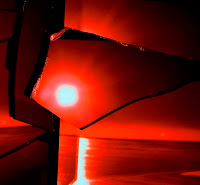 Where is music today? Sure even at its lowest points, select musicians and bands have kept hope alive. But 20 years from now, it’s unlikely people will look back on the 2000’s as a time when popular music was anywhere near its peak. When industry was smacked upside the head with the explosion of the internet and its capabilities, they turned inward and, rather than coming up with a solution that would work for both us and them, they decided on products over musicians. Who cares that the person didn’t write a single song on the album or even play an instrument. We can sell t-shirts!
Where is music today? Sure even at its lowest points, select musicians and bands have kept hope alive. But 20 years from now, it’s unlikely people will look back on the 2000’s as a time when popular music was anywhere near its peak. When industry was smacked upside the head with the explosion of the internet and its capabilities, they turned inward and, rather than coming up with a solution that would work for both us and them, they decided on products over musicians. Who cares that the person didn’t write a single song on the album or even play an instrument. We can sell t-shirts!Not surprisingly, this wasn’t a sustainable model, and the times have caught up with them. And finally the music lovers of the world are being rewarded for their perseverance and dedication. We are now seeing that talent (that has always been there) emerging in popular music scenes. And thankfully, TV On The Radio has fallen right into the new rising movement, whether they meant to or not.
The Brooklyn-based group – Tunde Adebimpe (Vocals), Kyp Malone (Vocals, Bass, Guitar, Synth, Strings), Dave Sitek (Keyboards, Guitar, Bass, Horns), Jaleel Bunton (Drums, Guitar, Rhodes, Organ, Synth, Bass, Strings), and the late Gerard Smith (Bass, Organ, Synthesizer, Rhodes) – has just released their “fourth proper studio album” and isn’t trying to appeal to the masses. They aren’t trying to sell t-shirts. Instead they’re following their own model. Perhaps they even said it best themselves: “TV On The Radio do not write traditional pop songs. Often, they change direction two or three times in one song.” They took the words right out of my mouth. And as with many good bands, their adherence to this non-formulaic method doesn’t come off as forced or unnatural. Instead it sucks you in. Sure there are times of simpler chord structures, but most often those are tweaked and twisted so much by the end of the song that you’ve forgotten where it began. Just as you think you’ve got a tune figured out, it takes a turn, sometimes so subtly you barely notice and at others it’s a slap in the face...but the kind that feels good.
Perhaps it’s the fact that Nine Types of Light is the first TVOTR album recorded outside of Brooklyn (L.A.) or maybe it’s that while even though the members are the same, their instruments aren’t. Whatever it is, there’s a freshness about it. There are definitely influences and hints from other bands, but from start to finish, the album brings that newness with it that makes you feel good, that makes you feel like we’ve made a turn and that music is good again.
It’s the blend in the very first track from folk to somewhere between classic rock and electronic. It’s the throwback synthesizers on “You” that yet sound brand new. It’s the David Byrne influence you hear in “No Future Shock” and the brilliant juxtaposition between it and “Killer Crane” that follows. It’s how the Police-sounding “Repetition” is one of my favorite tracks even though I typically don’t have patience for a song with so much…repetition. It’s how Adebimpe’s and Malone’s coarse vocals come off as soft-hearted when paired with the many affectionate lyrics.
No, these aren’t necessarily signs of genius or great innovators, but rather of talented musicians interested in putting together an entire piece rather than selling a single. It’s an indication that there is thought and originality being put into each song. It’s the realization to us that music can be good again, and indeed it is.
Rating
Overall: 4/5
Originality: 4/5
Production: 4/5
Listenability: 4/5





